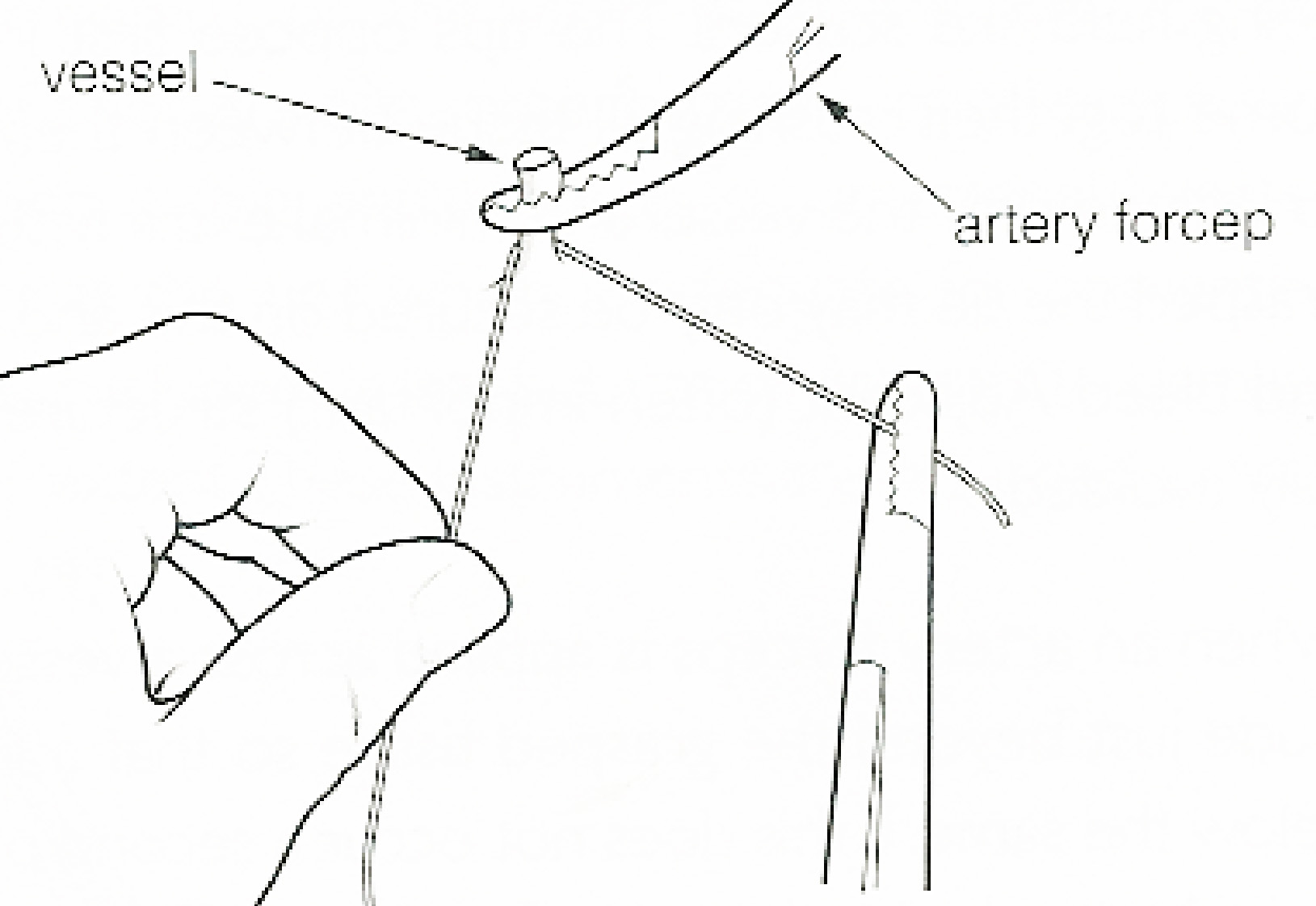Ligation (medicine) on:
[Wikipedia]
[Google]
[Amazon]
 In surgery or medical procedure, a ligature consists of a piece of thread ( suture) tied around an anatomical structure, usually a blood vessel or another hollow structure (e.g.
In surgery or medical procedure, a ligature consists of a piece of thread ( suture) tied around an anatomical structure, usually a blood vessel or another hollow structure (e.g.
 In surgery or medical procedure, a ligature consists of a piece of thread ( suture) tied around an anatomical structure, usually a blood vessel or another hollow structure (e.g.
In surgery or medical procedure, a ligature consists of a piece of thread ( suture) tied around an anatomical structure, usually a blood vessel or another hollow structure (e.g. urethra
The urethra (from Greek οὐρήθρα – ''ourḗthrā'') is a tube that connects the urinary bladder to the urinary meatus for the removal of urine from the body of both females and males. In human females and other primates, the urethra con ...
) to shut it off.
History
The principle of ligation is attributed toHippocrates
Hippocrates of Kos (; grc-gre, Ἱπποκράτης ὁ Κῷος, Hippokrátēs ho Kôios; ), also known as Hippocrates II, was a Greek physician of the classical period who is considered one of the most outstanding figures in the history of ...
and Galen
Aelius Galenus or Claudius Galenus ( el, Κλαύδιος Γαληνός; September 129 – c. AD 216), often Anglicized as Galen () or Galen of Pergamon, was a Greek physician, surgeon and philosopher in the Roman Empire. Considered to be one of ...
. In ancient Rome
In modern historiography, ancient Rome refers to Roman civilisation from the founding of the city of Rome in the 8th century BC to the collapse of the Western Roman Empire in the 5th century AD. It encompasses the Roman Kingdom (753–509 B ...
, ligatures were used to treat hemorrhoids
Hemorrhoids (or haemorrhoids), also known as piles, are vascular structures in the anal canal. In their normal state, they are cushions that help with stool control. They become a disease when swollen or inflamed; the unqualified term ''hemo ...
. The concept of a ligature was reintroduced some 1,500 years later by Ambroise Paré
Ambroise Paré (c. 1510 – 20 December 1590) was a French barber surgeon who served in that role for kings Henry II, Francis II, Charles IX and Henry III. He is considered one of the fathers of surgery and modern forensic pathology and a p ...
, and finally it found its modern use in 1870–80, made popular by Jules-Émile Péan
Jules-Émile Péan (29 November 1830 – 20 January 1898) was one of the great French surgeons of the 19th century.
Péan was born in 1830 in Marboué, french department of Eure-et-Loir. He studied at the college of Chartres and then studied m ...
.
Procedure
With a blood vessel the surgeon will clamp the vessel perpendicular to the axis of the artery or vein with ahemostat
A hemostat (also called a hemostatic clamp, arterial forceps, or pean after Jules-Émile Péan) is a surgical tool used in many surgical procedures to control bleeding. For this reason, it is common in the initial phases of surgery for the initia ...
, then secure it by ligating it; i.e. using a piece of suture around it before dividing the structure and releasing the hemostat. It is different from a tourniquet
A tourniquet is a device that is used to apply pressure to a limb or extremity in order to stop the flow of blood. It may be used in emergencies, in surgery, or in post-operative rehabilitation.
A simple tourniquet can be made from a stick and ...
in that the tourniquet will not be secured by knots and it can therefore be released/tightened at will.
Ligature is one of the remedies to treat skin tag
A skin tag, or acrochordon (pl. acrochorda), is a small benign tumor that forms primarily in areas where the skin forms creases (or rubs together), such as the neck, armpit and groin. They may also occur on the face, usually on the eyelids. Tho ...
, or acrochorda. It is done by tying string or dental floss
Dental floss is a cord of thin filaments used in interdental cleaning to remove food and dental plaque from between teeth or places a toothbrush has difficulty reaching or is unable to reach. Its regular use as part of oral cleaning is designed t ...
around the acrochordon to cut off the blood circulation.
Home remedies include commercial ligation bands that can be placed around the base of skin tags.
See also
* Elastrator *Surgical suture
A surgical suture, also known as a stitch or stitches, is a medical device used to hold body tissues together and approximate wound edges after an injury or surgery. Application generally involves using a needle with an attached length of threa ...
* Cheesewiring In medicine, the term cheesewiring or cheesewire effect (used interchangeably) describes any process in which cells or intercellular matrix are dissected or extruded either by the material being pressed through a taut element, or by the tension of a ...
References
Surgical procedures and techniques {{Treatment-stub kk:Лигатура